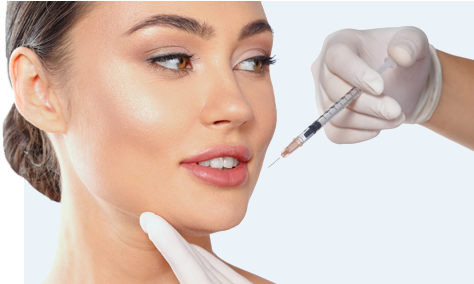In the evolving world of cosmetic dermatology, one treatment has emerged as a game-changer for those seeking youthful, radiant skin without invasive procedures. Platelet-Rich Plasma (PRP) therapy is revolutionizing the field of skin rejuvenation by harnessing the body’s own healing capabilities. Originally popularized by athletes looking to speed up recovery, PRP has now found its place in aesthetic medicine. With natural results and minimal downtime, prp therapy for face has quickly become a sought-after option among patients looking for non-surgical rejuvenation with long-lasting effects.
Understanding the Science Behind PRP
PRP therapy is grounded in a simple yet powerful biological principle: the body can heal and regenerate itself when given the right tools. Our blood contains platelets, rich in growth factors and proteins that support healing and tissue regeneration. During PRP treatment, a small amount of the patient's blood is drawn and processed in a centrifuge to separate the plasma and concentrate the platelets. This PRP is then re-injected into the skin to stimulate collagen production, increase cell turnover, and improve skin tone and texture.
The procedure is straightforward and typically completed in under an hour. Since the plasma is derived from the patient’s own blood, the risk of allergic reaction or rejection is extremely low. The treatment stimulates the skin from within, providing a natural, gradual improvement rather than the dramatic, sometimes artificial look that can result from synthetic fillers or surgical facelifts.
Benefits of PRP in Skin Rejuvenation
One of the most appealing aspects of PRP therapy is its versatility and wide range of benefits. It can be used to treat fine lines, wrinkles, acne scars, hyperpigmentation, and dull skin tone. Unlike other cosmetic procedures that may focus solely on one aspect of the skin, PRP addresses overall skin health, making it an all-in-one solution for many people.
Patients often report noticeable improvements in skin elasticity and texture after just one session. Over time, as collagen continues to build, results become more pronounced. PRP therapy has also been shown to reduce pore size, improve under-eye darkness, and create a plumper, more youthful appearance.
Another key advantage is the minimal recovery time. Some redness or swelling may occur immediately following the procedure, but most individuals can return to their normal activities the same day. This makes PRP ideal for busy professionals or anyone seeking effective results without the disruption of downtime.
How PRP Differs from Traditional Treatments
Traditional rejuvenation treatments like chemical peels, laser therapy, and injectable fillers have long been the standard in aesthetic medicine. While effective, these methods often come with trade-offs — extended recovery periods, risk of skin damage, or synthetic materials that may not always blend naturally with the body.
PRP, by contrast, utilizes what the body already produces. This natural approach significantly lowers the risk of complications and focuses on long-term improvements rather than short-term fixes. Moreover, PRP can be safely combined with other cosmetic procedures for enhanced results. For instance, microneedling with PRP has gained traction as a powerful skin renewal combination, delivering improved absorption of growth factors and more effective tissue remodeling.
Furthermore, the results of PRP are cumulative. While patients may see some immediate glow after their session, the real transformation happens over weeks and months as the skin regenerates from the inside out. This aligns with a growing demand for sustainable beauty practices that focus on wellness and gradual enhancement.
Who is an Ideal Candidate for PRP Therapy?
PRP is suitable for a wide demographic, particularly individuals looking to improve the overall quality of their skin without resorting to invasive treatments. It is especially beneficial for those beginning to notice early signs of aging, such as fine lines, decreased elasticity, and uneven skin tone. It can also be valuable for individuals with acne scars or dull, tired-looking skin that hasn’t responded well to topical products.
However, certain conditions may limit eligibility. Patients with bleeding disorders, active infections, or chronic liver disease should avoid PRP unless cleared by a healthcare professional. Additionally, while PRP provides excellent rejuvenating effects, it may not offer the dramatic results of surgical options for those with advanced skin laxity or deep facial folds.
As with any cosmetic treatment, consultation with a qualified practitioner is crucial. An experienced provider can evaluate skin type, goals, and medical history to ensure PRP is the right fit, and can set realistic expectations regarding the outcome and necessary number of sessions.
Looking Ahead: The Future of PRP in Aesthetic Medicine
The popularity of PRP therapy shows no signs of slowing. As research continues and techniques become more refined, its applications in cosmetic dermatology are expected to expand further. Innovations such as combining PRP with stem cell therapy or advanced delivery systems like nanoneedling are already being explored, aiming to enhance efficacy and precision.
Moreover, the growing consumer preference for natural and holistic beauty solutions positions PRP at the forefront of the next wave in aesthetic medicine. Unlike passing fads or gimmick treatments, PRP is backed by solid science and tangible results. Its ability to rejuvenate skin using the body’s own biological materials represents a shift toward safer, smarter beauty strategies.
Clinics offering PRP are also investing in better patient education and customized care plans, making treatments more accessible and tailored to individual needs. As awareness increases and patient satisfaction remains high, PRP is likely to remain a cornerstone in skin rejuvenation for years to come.
Conclusion
PRP therapy marks a significant turning point in the way we approach skin rejuvenation. By empowering the body to heal and renew itself, it offers a natural, effective, and low-risk alternative to traditional cosmetic procedures. Whether you’re seeking to smooth fine lines, brighten your complexion, or simply restore a youthful glow, PRP provides a path that aligns with both modern science and holistic beauty ideals. As this treatment continues to evolve, it’s clear that the era of regenerative aesthetics has truly begun — and it’s only just getting started.
